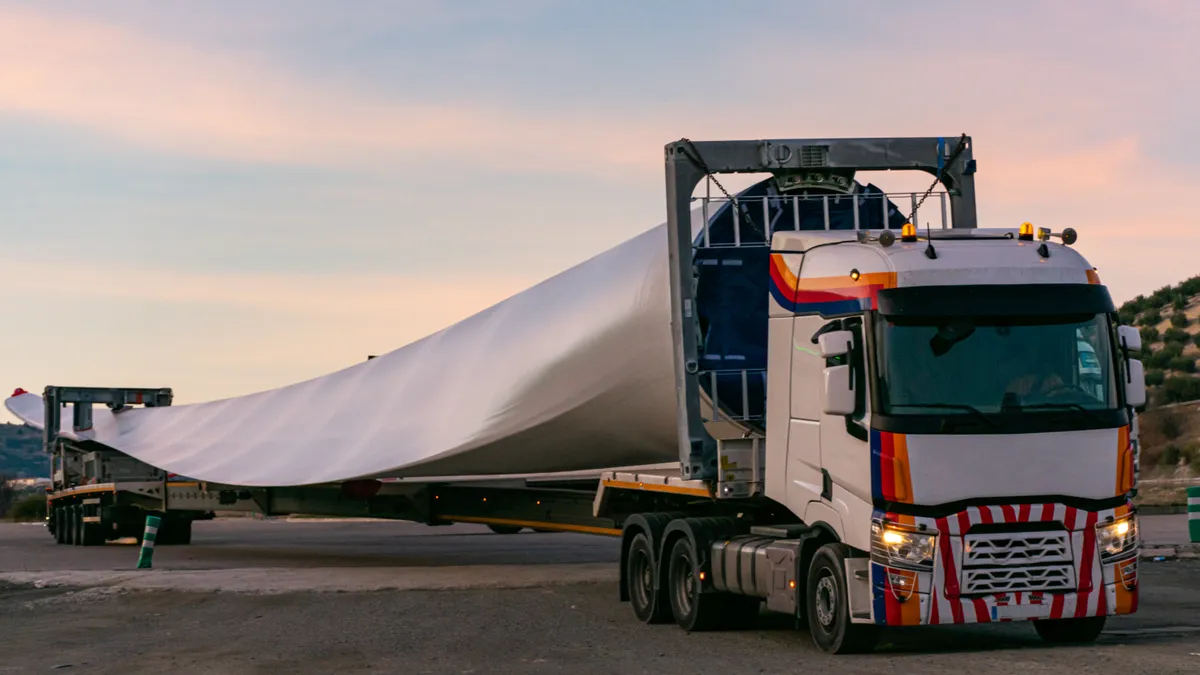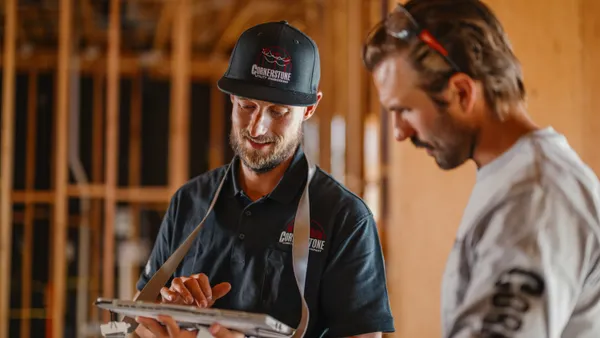Dive Brief:
-
A high-speed rail project in the U.K. is piloting the use of worn-out wind turbine blades to reinforce concrete, according to a press release from the joint venture constructing the project.
-
High Speed 2 will link London with the country's Midlands region and north into Scotland via more than 25 stations. A Skanska, Costain, Strabag joint venture is constructing the project.
-
The turbines will be used in place of steel rebar traditionally used to reinforce concrete, the joint venture said.
Dive Insight:
By 2023, roughly 15,000 wind turbine blades will be decommissioned across the U.K. and the European Union, according to the press release. Most decommissioned blades are ground down to be used as building materials or are incinerated. GE's Renewable Energy arm, for example, uses the ground-up blades as an ingredient in the coproduction of Portland cement — the most common concrete ingredient in the world.
Substituting HS2's rebar with wind turbine blades would cut the carbon generated by concrete reinforcement by up to 90%, the joint venture said. The project is still in its proof of concept stage, so use on the project has not yet begun.
"This scheme is a brilliant example of the innovation happening on the whole HS2 project," HS2 Innovation Manager Rob Cairns said in the release. "If our world-first pilot project goes well, we could see a waste product from the energy industry becoming an essential material for the construction sector in the future."
HS2's timeline is split into the following phases:
-
Phase 1 has a funding envelope of £35 billion to £45 billion ($48 billion to $62 billion) and will open between 2029 and 2033. It will entail the construction of 140 miles of high speed train tracks between London and Birmingham.
-
Phase 2a and Phase 2b expand the work from Phase 1, connecting the rails to smaller towns and reaching Scotland and Wales.














